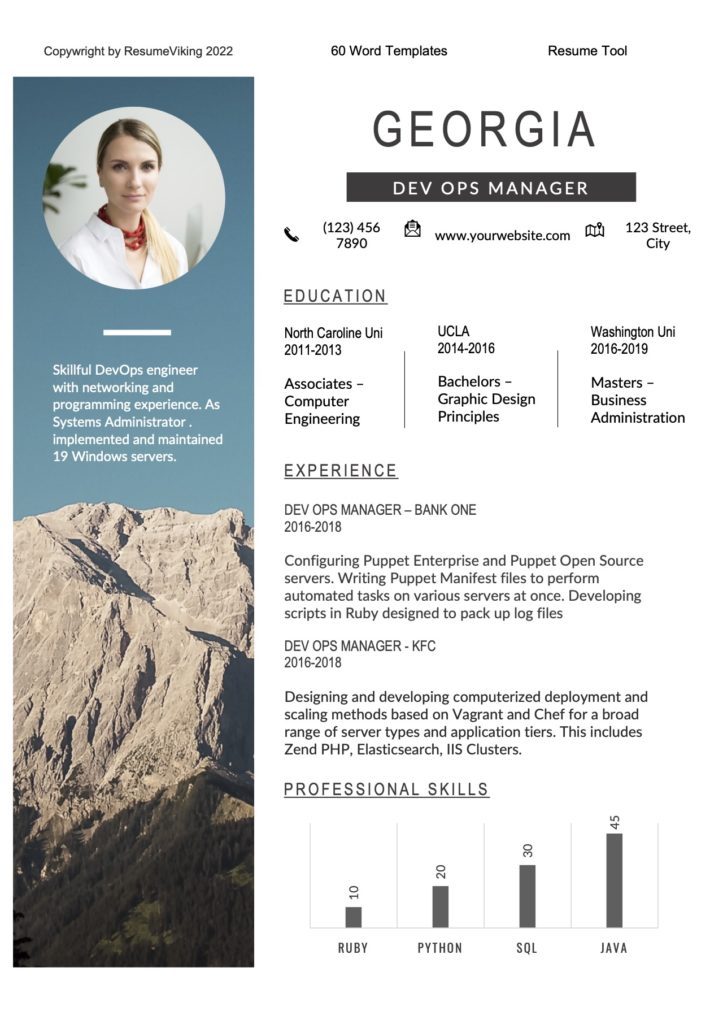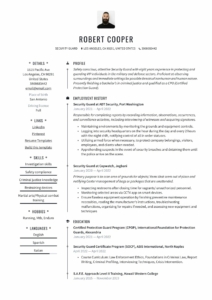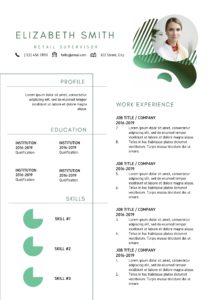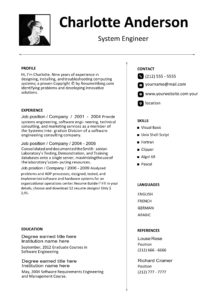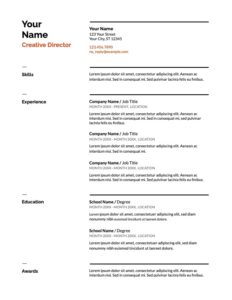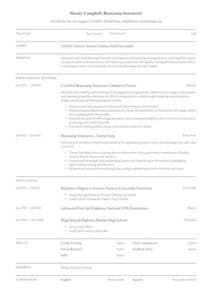
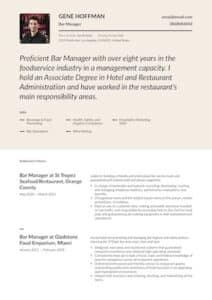
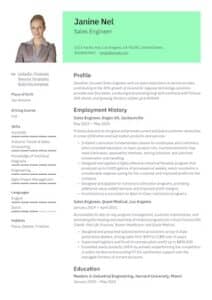
A resume is one of the most important documents that you will ever write in your professional life. It is a document that showcases your skills, experience, and qualifications to potential employers. A well-written resume can help you stand out from the crowd and get the job that you want. In this guide, we will provide you with a step-by-step guide on how to write a resume that will impress employers.
The perfect resume is basic and well-summarized. The perfection lies in its simplicity and attention to detail.
We try to make this resume guide simple and to the point.
Be accurate, be fair.
Step 1: Choose the Right Format
The first step in writing a great resume is to choose the right format. There are three main types of resume formats: chronological, functional, and combination. Each of these formats has its own advantages and disadvantages, and you should choose the one that best suits your experience and career goals.
Chronological Format:
A chronological resume format is the most common and traditional type of resume. It lists your work experience in reverse chronological order, starting with your most recent job and working backwards. This format is ideal for job seekers who have a steady work history and are looking for a job in a similar field.
Pros: Traditional resume style, familiar to potential employers.
Cons: Very common, not the most creative resume design format.
Functional Format:
A functional resume format is ideal for jobseekers who have gaps in their employment history or are looking to switch careers. Instead of listing your work experience in chronological order, this format focuses on your skills and accomplishments. It is divided into sections such as skills, accomplishments, and qualifications.
Pros: Entry-level job hunters can emphasize skills over lack of experience.
Cons: HR managers may think you're hiding something.
Combination Format:
A combination resume format combines elements of the chronological and functional formats. It lists your work experience in reverse chronological order, but also includes sections for skills and accomplishments. This format is ideal for job seekers who have a strong work history and want to highlight their skills and accomplishments.
Pros: Great for experienced pros and career changers for highlighting transferable skills.
Cons: Uncommon type, not as familiar, not recommended for entry-level jobseekers.
Step 2: Choose the Right Font and Formatting
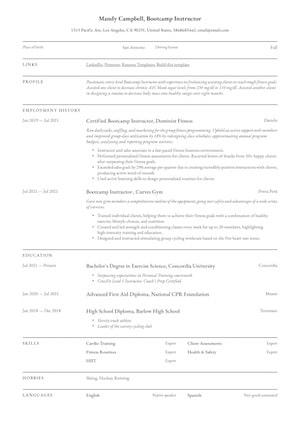
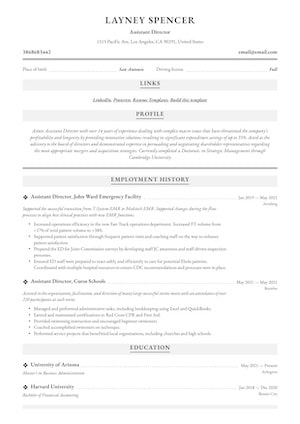
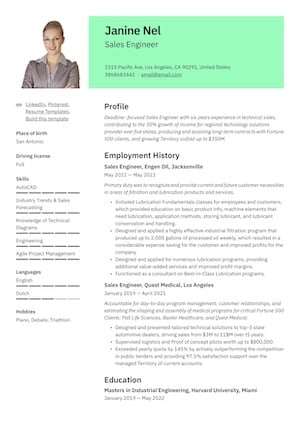
Once you have chosen the right resume format, it is important to choose the right font and formatting. Your resume should be easy to read and visually appealing. The font should be easy to read and not too small. Arial, Times New Roman, and Calibri are all good options. The font size should be between 10 and 12 points.
Formatting is also important. Your resume should be well-organized and easy to scan. Use bullet points to highlight your skills and accomplishments. Use bold and italic fonts to draw attention to important information. Use plenty of white space to make your resume easy to read.
Step 3: Include the Right Sections
Your resume should include the following sections:
Table of Contents:
1. Contact information
2. Profile Summary
3. Employment History
4. Education section
5. Extracurricular activities
6. Courses & Training
7. Skills
8. Languages
9. Hobbies and Interests (optional)
Contact Information
The first section of your resume should be your contact information. This includes your full name, address, phone number, and email address. It's important to make sure that your contact information is accurate and up-to-date so that potential employers can easily get in touch with you.
- Name & Surname
- Address
- Telephone number
- Links to online profiles (optional)
- Driver's license (optional)
- Nationality(optional)
Example:
John Doe
123 Main Street
Anytown, USA 12345
(555) 555-5555
[email protected]
Profile summary
The profile summary is a brief statement that highlights your skills, experience, and qualifications. It's typically placed at the beginning of the resume and should be tailored to the job that you are applying for. Your profile summary should be a snapshot of your career and showcase your unique selling points.
Your profile summary should include the following information:
- Your current job title or area of expertise
- The number of years of experience you have in your field
- Your top skills and achievements
- Any relevant certifications or awards
Example:
Highly motivated and skilled sales professional with over 5 years of experience in the retail industry. Proven track record of exceeding sales targets and providing exceptional customer service. Possesses strong communication and interpersonal skills, and the ability to work effectively in a team environment.
Example:
Marketing professional with 5+ years of experience in digital marketing, SEO, and social media. Strong analytical skills with a proven track record of increasing website traffic and driving sales. Certified in Google Analytics and AdWords.
Employment history
The employment history section of your resume should detail your work experience. This includes your job title, the name of the company you worked for, the dates you worked there, and your key responsibilities and achievements. It's important to include relevant work experience that demonstrates your skills and qualifications for the job that you are applying for.
For each job, include the following information:
- The name of the company and your job title
- The dates you were employed
- A brief description of your responsibilities and accomplishments
- Any notable achievements or awards
Use bullet points to make this section easy to read and scan. Begin each bullet point with a strong action verb to showcase your accomplishments.
Here are examples of employment history:
Marketing Manager
ABC Company, Anytown USA
June 2018 – Present
- Developed and executed marketing campaigns that increased website traffic by 30% and generated over $500,000 in revenue
- Managed a team of three marketing specialists, providing training and guidance to help them achieve their goals
- Analyzed data from Google Analytics and AdWords to optimize campaigns and improve ROI
- Awarded “Marketing Campaign of the Year” at the 2020 Marketing Excellence Awards
Sales Associate
ABC Retail Store
June 2018 – Present
- Achieved sales targets of $500,000 per quarter
- Provided exceptional customer service, resulting in a 98% customer satisfaction rating
- Trained new employees on product knowledge and sales techniques
- Conducted daily inventory and restocked merchandise as necessary
Education Section
The education section of your resume should detail your academic qualifications in reverse chronological order. This means starting with your most recent degree or certification and working backward. It's important to include relevant academic achievements that demonstrate your skills and qualifications for the job that you are applying for.
For each degree or certification, include the following information:
- The name of the institution
- The degree or certification you earned
- The dates you attended
- Any academic honors or awards
Examples:
Bachelor of Science in Business Administration
XYZ University
September 2014 – June 2018
- Graduated with honors (Cum Laude)
- Majored in Marketing
- Completed courses in Consumer Behavior, Marketing Research, and Advertising
Bachelor of Science in Marketing
University of Anytown, Anytown USA
August 2014 – May 2018
GPA: 3.8/4.0
Dean's List (all semesters)
Extracurricular Activities
The extracurricular activities section of your resume should detail any relevant activities or volunteer work that you have participated in. This includes clubs, organizations, or volunteer work that demonstrate your skills and qualifications for the job that you are applying for. It's important to highlight your leadership and teamwork skills in this section.
Example:
Volunteer
Local Food Bank
June 2022 – Present
- Coordinated and organized food drives
- Managed a team of 10 volunteers
- Participated in fundraising events
- Contributed to selecting and sorting of incoming food & donations
Courses & Training
Including courses and training on your resume can demonstrate your dedication to improving your skills and knowledge. This section should include any relevant courses or certifications you have completed, as well as any professional development activities you have undertaken.
When listing courses and training, make sure to include the name of the course or program, the institution where you completed it, the date of completion, and any relevant certifications or degrees earned. If the course or program is ongoing, indicate this by including the phrase “in progress” after the date.
For example:
- Certificate in Project Management, University of XYZ, May 2022
- Advanced Excel Training, Online Course, in progress
Make sure to only include courses and training that are relevant to the job you are applying for. Including irrelevant courses or training can take up valuable space on your resume and may not be of interest to potential employers.
Skills
The skills section of your resume is where you can showcase your abilities and strengths. This section should include both hard skills (such as proficiency in a particular software program) and soft skills (such as communication or leadership skills).
When listing skills, make sure to use specific examples to demonstrate your abilities. For example, instead of simply listing “communication skills,” provide an example in the job interview of a time when you effectively communicated with a team or a client.
Make sure to tailor your skills section to the job you are applying for. Look at the job description and identify the key skills required for the position. Make sure to include those skills in your resume, using specific examples to demonstrate your abilities.
Languages
If you are fluent in a language other than your native language, it can be beneficial to include this on your resume. This section should include the languages you are proficient in, as well as your level of proficiency (such as “fluent,” “proficient,” or “basic”).
If you have taken any language courses or have any relevant certifications, make sure to include this information as well.
Hobbies and Interests (optional)
Including a section on hobbies and interests is optional, but it can provide potential employers with a glimpse into your personality and interests outside of work.
When listing hobbies and interests, make sure to choose activities that are relevant to the job or demonstrate skills that could be useful in the workplace. For example, if you are applying for a job in marketing, including activities such as blogging or social media management could be beneficial.
Make sure to keep your hobbies and interests brief and to the point. Only include activities that are relevant and showcase your strengths or abilities.
Overall, writing a great resume requires attention to detail and a strong understanding of what potential employers are looking for. By following these steps and tailoring your resume to the job you are applying for, you can create a compelling and effective resume that showcases your strengths and experience.
Step 4: Tailor Your Resume to the Job
One of the most important things you can do when writing a resume is to tailor it to the job that you are applying for. This means that you should carefully read the job description and make sure that your resume reflects the skills and experience that the employer is looking for.
Use the language from the job description in your resume. If the job description uses specific keywords, make sure to include them in your resume. This will help your resume get past automated screening systems and into the hands of a real human being.
Step 5: Proofread and Edit Your Resume
Before you send your resume to potential employers, it is important to proofread and edit it carefully. Typos and grammatical errors can make you look unprofessional and careless. Here are some tips for proofreading and editing your resume:
- Read your resume backwards. This will help you catch any errors that you might have missed when reading it forwards.
- Use spell check and grammar check. However, don't rely solely on these tools as they may miss some errors.
- Print out your resume and read it on paper. This will help you catch errors that you might have missed on a computer screen.
- Ask a friend or family member to review your resume. They can provide feedback and catch errors that you might have missed.
Step 6: Customize Your Resume for Different Jobs
Finally, it's important to customize your resume for each job that you apply for. This means that you should create a new resume for each job, highlighting the skills and experience that are most relevant to that position.
Here are some tips for customizing your resume:
- Use the job description as a guide. Highlight the skills and experience that the employer is looking for.
- Include keywords from the job description in your resume.
- Tailor your objective or summary statement to the job that you are applying for.
- Highlight the skills and experience that are most relevant to the job.
- Remove any information that is not relevant to the job.
Conclusion
In conclusion, writing a great resume is essential to landing your dream job. By following these steps and tailoring your resume to each job that you apply for, you can increase your chances of getting hired. Remember to choose the right format, use the right font and formatting, include the right sections, tailor your resume to the job, proofread and edit your resume, and customize your resume for different jobs. Good luck with your job search!
Example Resume & CV's
Nutrition Consultant Resume
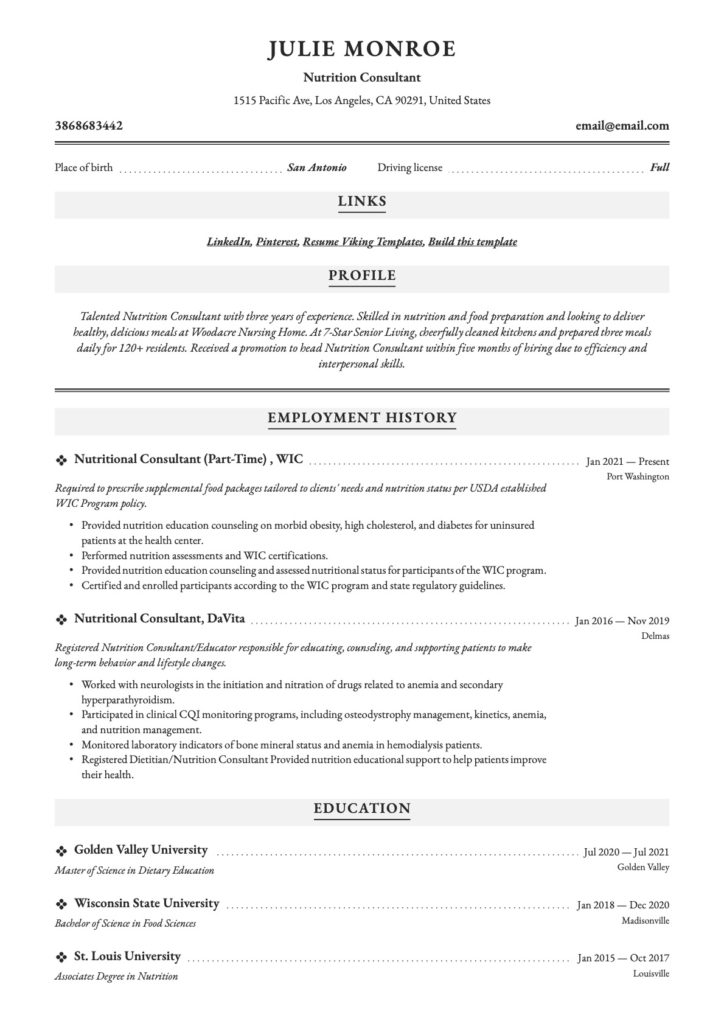
Vet Tech Resume Example
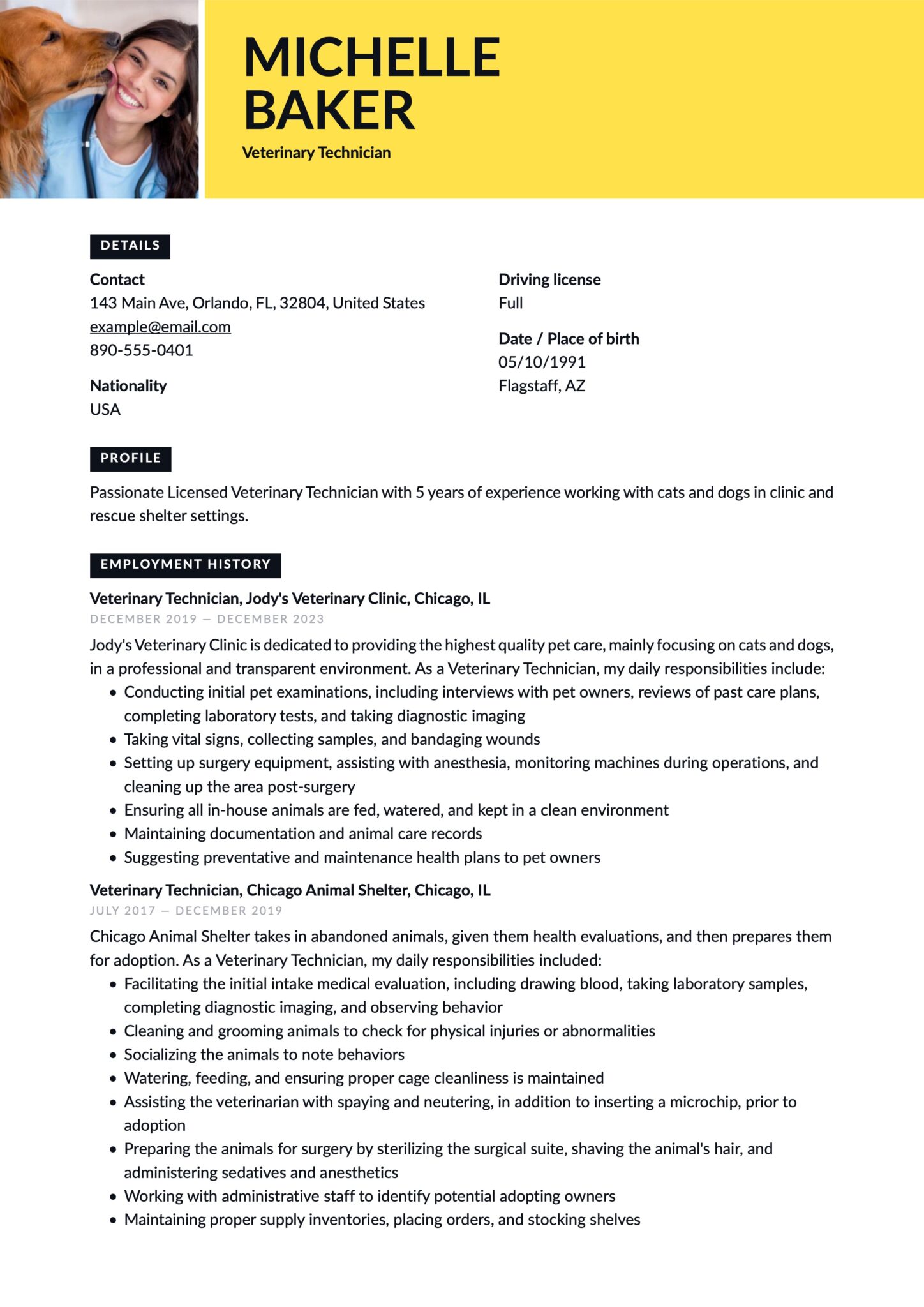
Architect CV
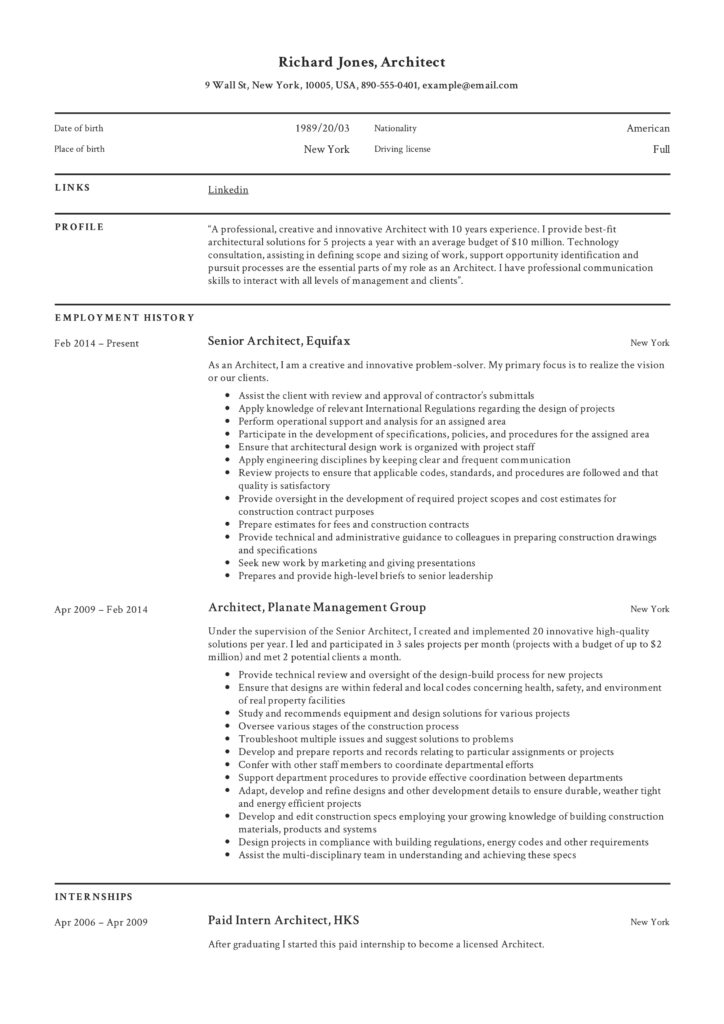
Web Developer Resume
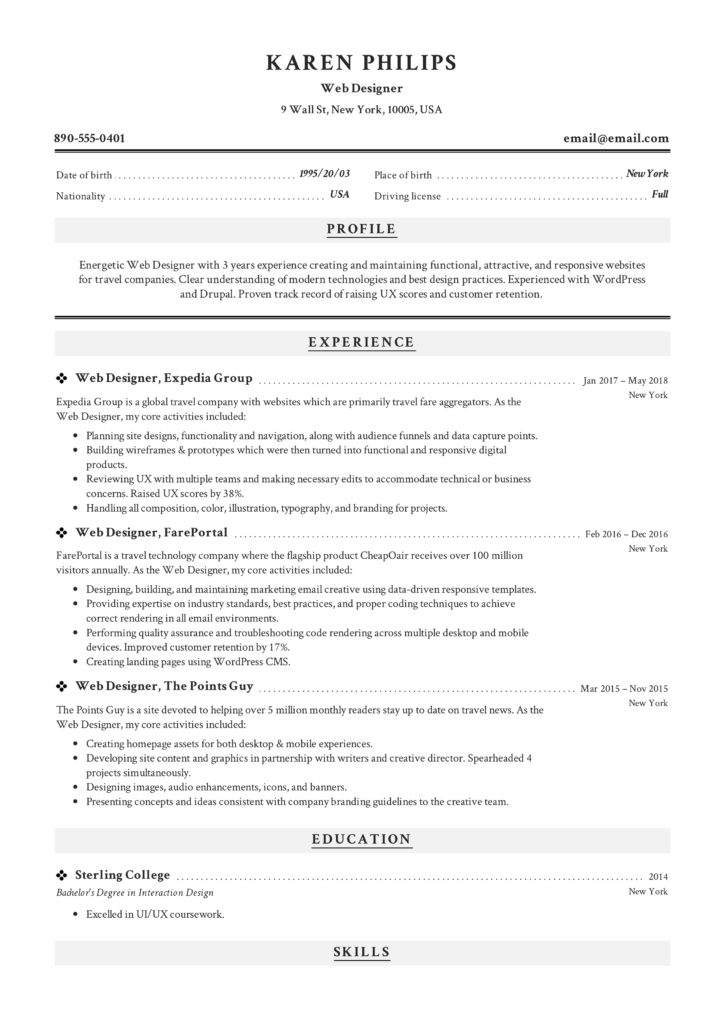
DevOps Manager Resume
